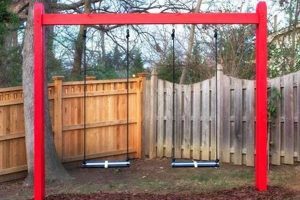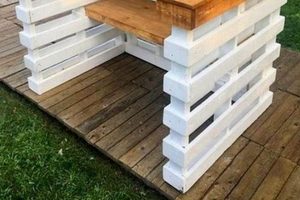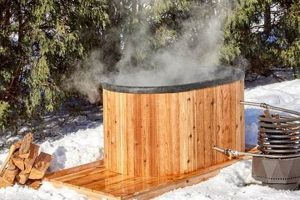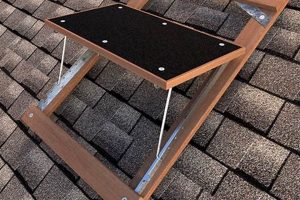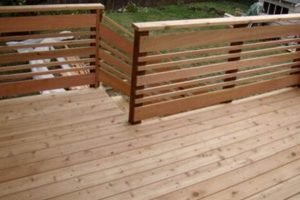The phrase denotes the practice of constructing boxes or containers from timber by an individual for personal use. These projects frequently involve assembling pre-cut lumber or repurposing existing wooden materials into functional or decorative objects. As an instance, one might build a storage unit for organizing household items from reclaimed pallet boards.
The creation of these structures offers multiple advantages, encompassing cost savings, customization, and environmental responsibility through material reuse. Historically, woodworking skills were essential for producing containers for storage and transportation. Modern applications extend beyond basic utility to encompass aesthetic enhancements within home dcor and organizational systems.
The subsequent sections will explore various aspects of this activity, including design considerations, essential tools and techniques, and project ideas that cater to diverse skill levels and functional requirements. Furthermore, safety protocols and responsible sourcing of materials will be addressed.
Practical Guidance for Wood Crate Construction
The following guidelines are designed to enhance the success and longevity of handcrafted wooden containers. Adherence to these recommendations will contribute to both structural integrity and aesthetic appeal.
Tip 1: Material Selection: Prioritize the utilization of seasoned lumber. Unseasoned wood is prone to warping and shrinkage, which can compromise the structural integrity of the finished crate. Moisture content should ideally be below 15%.
Tip 2: Jointing Techniques: Employ robust jointing methods such as dovetail joints, mortise and tenon joints, or reinforced butt joints with appropriate fasteners. The selected joint should be commensurate with the intended load-bearing capacity of the container.
Tip 3: Fastener Selection: Choose screws or nails of appropriate length and gauge for the thickness of the wood being joined. Pilot holes are advisable to prevent splitting, particularly when working with hardwoods.
Tip 4: Surface Preparation: Sand all surfaces smooth prior to assembly. This minimizes the risk of splinters and provides a suitable surface for subsequent finishing treatments.
Tip 5: Protective Finishing: Apply a protective finish such as varnish, sealant, or paint to safeguard against moisture and insect infestation. Consider the intended environment of the crate when selecting the finish.
Tip 6: Reinforcement Strategies: For crates intended to bear heavy loads, consider incorporating internal bracing or corner reinforcements. This will enhance the overall stability and prevent deformation under stress.
Tip 7: Accurate Measurement: Precise measurements are paramount. Implement accurate measuring tools and techniques to ensure proper alignment and squareness during assembly. Discrepancies can lead to structural weaknesses.
Proper adherence to these guidelines will result in durable and aesthetically pleasing containers suitable for a variety of applications. Consistent application of these principles contributes to both structural soundness and visual appeal.
The ensuing section will address the final steps in the process, including quality control and potential troubleshooting scenarios.
1. Material Selection
Material selection constitutes a foundational decision within the domain of handcrafted wooden containers. The type of wood employed directly influences the structural integrity, longevity, aesthetic character, and overall cost-effectiveness of the final product. Careful consideration must be given to factors such as wood species, grade, and treatment.
- Wood Species and Durability
Different wood species possess varying degrees of inherent resistance to decay, insect infestation, and mechanical stress. For example, cedar and redwood exhibit natural resistance to rot, making them suitable for outdoor applications. Conversely, softer woods like pine require protective treatments to enhance their durability in similar environments. Hardwoods such as oak or maple offer superior strength for load-bearing crates.
- Wood Grade and Defect Assessment
The grade of lumber indicates the presence and extent of defects such as knots, cracks, and warping. Higher grades, characterized by fewer imperfections, typically offer greater structural stability and a more refined appearance. Selecting a grade appropriate to the intended application minimizes waste and reduces the risk of structural failure. Lower grades might be acceptable for purely decorative crates where structural integrity is not paramount.
- Wood Treatment and Preservation
Chemical treatments can significantly extend the lifespan of wooden containers, particularly those exposed to moisture or soil contact. Pressure-treated lumber, infused with preservatives, resists decay and insect damage. However, the use of treated wood should be carefully considered due to potential environmental and health concerns. Alternatives such as naturally rot-resistant species or the application of sealants and finishes may offer more sustainable solutions.
- Source and Sustainability
Responsible sourcing of lumber is an increasingly important consideration. Choosing wood certified by organizations like the Forest Stewardship Council (FSC) ensures that it originates from sustainably managed forests. Utilizing reclaimed or repurposed wood minimizes environmental impact by reducing the demand for newly harvested timber. Prioritizing sustainable sourcing aligns with responsible woodworking practices.
The careful evaluation and selection of appropriate materials are critical for achieving a durable, functional, and aesthetically pleasing wooden container. Informed decisions regarding wood species, grade, treatment, and source contribute significantly to the overall success and sustainability of the project, while minimizing potential long-term issues and environmental impact.
2. Joint construction
Joint construction directly influences the structural integrity and longevity of handcrafted wooden containers. The chosen method of joining wood pieces dictates the crate’s ability to withstand stress, weight, and environmental factors. Deficient joint construction results in weakened points susceptible to failure, rendering the entire structure unstable. For instance, a crate employing simple butt joints held only by nails may suffice for light-duty storage but will likely collapse under significant weight or repeated use. Conversely, interlocking joints such as dovetails or mortise-and-tenon connections distribute stress more effectively, resulting in a substantially stronger and more durable container.
Proper joint construction is also critical for maintaining the dimensional stability of the crate. Joints that are not precisely cut or securely fastened can allow for movement between the wood pieces, leading to warping, twisting, or eventual separation. The selection of an appropriate jointing technique should consider the type of wood being used, the intended load capacity of the container, and the desired aesthetic. For example, crates intended for outdoor use benefit from joints that minimize water penetration and promote efficient drainage, thus preventing rot and decay. Reinforcement, such as the addition of glue or mechanical fasteners, further enhances the strength and stability of the joints.
In summary, joint construction is a fundamental element in the creation of durable and reliable wooden containers. A comprehensive understanding of various jointing techniques and their respective strengths and weaknesses allows the craftsman to select the optimal method for a given application. Investing time and effort in proper joint construction translates directly to a higher quality product capable of withstanding the rigors of use and the passage of time. Ignoring this crucial aspect inevitably leads to structural compromises and a diminished lifespan for the finished item.
3. Fastener choice
Fastener selection exerts a direct influence on the structural integrity and functional longevity of a constructed timber container. Inadequate fastener selection can compromise joint strength, leading to premature failure and rendering the crate unsuitable for its intended purpose. For instance, utilizing short, thin nails to assemble a crate intended for heavy storage results in a structurally weak assembly, prone to separation under load. Conversely, employing screws of appropriate length, gauge, and material composition ensures a secure and durable connection, capable of withstanding substantial weight and stress. The choice directly correlates with the crate’s ability to perform its intended function effectively.
Practical examples further illustrate this critical connection. In marine applications, where crates are exposed to constant moisture, corrosion-resistant fasteners such as stainless steel or silicon bronze are imperative. Using standard steel fasteners in such an environment leads to rapid corrosion, weakening the joints and ultimately causing structural failure. Similarly, when working with hardwoods, pre-drilling pilot holes is essential to prevent splitting, and the correct selection of screw type such as a coarse-threaded screw designed for hardwoods ensures optimal holding power. The application also extends to aesthetic considerations; countersinking screws and covering the heads with wood filler provides a clean, professional finish, enhancing the visual appeal alongside the structural soundeness.
In summary, fastener selection is not a trivial consideration but a critical determinant of the final product’s quality and performance. Understanding the specific requirements of the project, including the weight it must bear, the environmental conditions it will face, and the type of wood being used, is paramount. Informed fastener selection contributes directly to a robust, reliable, and long-lasting crate, aligning with the core principles of effective craftsmanship. Overlooking this aspect compromises the entire endeavor, potentially leading to costly repairs or complete structural failure.
4. Surface finishing
Surface finishing is an essential stage in the construction of wooden containers, significantly affecting both the aesthetic appeal and the long-term durability of the product. The application of appropriate finishes protects the wood from environmental factors, enhances its visual characteristics, and contributes to the overall longevity of the structure. A properly executed surface finish is integral to the success of such projects.
- Protection Against Moisture and Degradation
Surface finishes provide a barrier against moisture penetration, which is a primary cause of wood decay, warping, and fungal growth. Sealants, varnishes, and paints create a protective layer that minimizes water absorption, thereby preventing structural damage. For example, crates intended for outdoor use or storage in damp environments require robust, water-resistant finishes to prolong their lifespan. Unprotected wood readily absorbs moisture, leading to swelling, cracking, and eventual rot, rendering the crate unusable.
- Enhancement of Aesthetic Qualities
Surface finishes accentuate the natural grain and color of the wood, enhancing its visual appeal. Stains can be used to alter the wood’s tone, while clear coats provide a glossy or matte sheen that highlights its texture. For instance, a well-sanded crate finished with a clear varnish exhibits the wood’s inherent beauty, making it suitable for decorative purposes or display. Conversely, a poorly finished crate may appear dull and unattractive, detracting from its overall value.
- Resistance to Wear and Abrasion
Durable surface finishes protect the wood from scratches, scuffs, and other forms of physical damage. Polyurethane coatings, for example, provide a tough, resilient surface that withstands daily wear and tear. Crates used for transporting or storing heavy items benefit from abrasion-resistant finishes that prevent unsightly marks and maintain their appearance over time. Without such protection, the wood’s surface is vulnerable to damage, leading to a diminished appearance and reduced structural integrity.
- Prevention of Insect Infestation
Certain surface finishes contain insecticides or create a barrier that deters insects from boring into the wood. Preservatives and sealants can effectively prevent wood-boring insects from infesting the crate, thereby preventing structural damage and extending its lifespan. Crates used for storing food or other perishable items benefit from finishes that are both insect-resistant and food-safe. Untreated wood is susceptible to insect attack, leading to structural weakening and contamination of the contents.
In conclusion, surface finishing is a critical aspect of DIY wood crate construction, directly impacting its durability, aesthetic appeal, and resistance to environmental factors. The selection and application of appropriate finishes are essential for ensuring the long-term functionality and visual quality of the final product, contributing significantly to its overall value and utility. Consideration must be given to the intended application and environment to select the finish best suited to meet the crate’s specific needs.
5. Design planning
Design planning constitutes a foundational prerequisite for successful handcrafted timber container construction. A meticulously conceived design directly influences material selection, structural integrity, and functional suitability of the final product. Neglecting design planning invariably results in inefficiencies, increased material waste, compromised structural soundness, and a diminished overall aesthetic outcome. For instance, constructing a storage crate without pre-determining its dimensions or intended load capacity can lead to the selection of inadequate lumber, improper joint construction, and a container incapable of fulfilling its purpose. The failure to plan effectively precipitates a cascade of negative consequences that undermine the entire project.
Consider the creation of a crate intended for transporting delicate equipment. Design planning necessitates assessing the weight and dimensions of the equipment, selecting shock-absorbing materials for internal cushioning, and incorporating secure latching mechanisms to prevent accidental opening during transit. Conversely, a poorly planned design might omit critical protective features, resulting in damage to the contents during transportation. A further practical application is seen in the design of stackable containers. Careful consideration must be given to the dimensions and weight distribution to ensure stability and prevent toppling when stacked. The absence of such planning can lead to hazardous conditions and potential product damage. Accurate dimensional calculations, material assessments, and functional requirement analysis are crucial elements of effective design planning.
In summary, design planning serves as the cornerstone of the entire process. Its influence permeates every subsequent stage, from material procurement to final assembly. A comprehensive understanding of the intended application, load requirements, and environmental conditions enables the formulation of a design that optimizes structural integrity, minimizes material waste, and ensures functional suitability. Embracing a systematic approach to design planning is not merely a matter of preference but a critical determinant of project success, mitigating risks and maximizing the potential for a robust and aesthetically pleasing outcome. It is essential for all skilled levels whether experts or novice.
Frequently Asked Questions
The following section addresses common inquiries concerning the creation of wooden containers, providing concise and informative answers to facilitate successful project completion.
Question 1: What is the optimal lumber for a heavy-duty container?
Hardwoods such as oak, maple, or ash are recommended for applications requiring substantial load-bearing capacity. These species exhibit superior strength and resistance to deformation compared to softwoods like pine or fir.
Question 2: How can warping be prevented during the construction process?
Employing seasoned lumber with a moisture content below 15% is crucial. Additionally, proper storage of lumber prior to construction, avoiding direct sunlight and extreme temperature fluctuations, minimizes the risk of warping.
Question 3: Which jointing techniques provide the greatest structural integrity?
Interlocking joints, such as dovetail or mortise-and-tenon connections, offer superior strength and resistance to stress compared to simple butt joints. These techniques distribute force more evenly across the joint surface.
Question 4: What type of fasteners are suitable for outdoor applications?
Corrosion-resistant fasteners, such as stainless steel or silicon bronze screws, are essential for outdoor environments. These materials prevent rust and maintain joint integrity despite exposure to moisture and weather elements.
Question 5: How can a container be effectively protected from insect infestation?
Applying a preservative or sealant containing insecticides provides a barrier against wood-boring insects. Regular inspection and maintenance are also crucial to identify and address any signs of infestation promptly.
Question 6: Is it necessary to sand surfaces prior to applying a finish?
Sanding is crucial for creating a smooth and uniform surface, enhancing the adhesion and appearance of the finish. A well-sanded surface minimizes imperfections and promotes optimal finish performance.
Adherence to these guidelines will contribute to the creation of durable and aesthetically pleasing containers suited for a variety of purposes.
The subsequent section explores advanced techniques for enhancing container durability and aesthetic appeal.
DIY Wood Crate Construction
The preceding sections have explored diverse facets of constructing timber containers. Examination encompassed material selection, emphasizing seasoned lumber and appropriate species; joint construction, highlighting robust techniques for structural integrity; fastener choice, advocating corrosion-resistant options for durability; surface finishing, detailing protective measures against environmental factors; and design planning, underscoring its pivotal role in functionality. Understanding and implementing these principles are critical for producing long-lasting and aesthetically pleasing structures.
The creation of such items presents opportunities for customization, resourcefulness, and skill development. Individuals are encouraged to apply the knowledge gained to create practical and aesthetically pleasing solutions. Continued dedication to quality and informed practices will ensure effective and sustainable results for all future timber container projects.


